|
Displaying items by tag: landscape
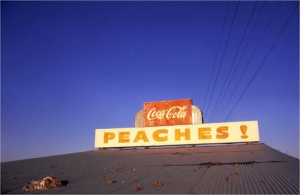
An exhibition titled At War with the Obvious: Photographs by William Eggleston is now on view at the Metropolitan Museum of Art in New York. William Eggleston (b. 1939) became pioneering force in modern photography during the 1960s and helped legitimize color photography as a respected art form. He also popularized the dye-transfer color process, a practice that until then was primarily used by commercial photographers. Eggleston, who remains a prominent figure in the modern art world, draws inspiration from a number of sources including the photography of Robert Frank (b. 1924) and Henri Cartier-Bresson (1908-2004) as well as the musical compositions of Johann Bach.
A native of the Mississippi delta region, Eggleston’s photographs often depict the inhabitants as well as the physical landscape of the area. Drawn to seemingly ordinary subject matters, Eggleston is able to evoke a sense of complexity and raw beauty from the mundane. Often featuring roadside snapshots, backyard barbeques, parking lots, and diners, Eggleston’s photographs act as a lush interpretation of the American vernacular.
At War with the Obvious commemorates the Met’s acquisition of 36 dye-transfer prints by Eggleston, which took place in the fall of 2012. The addition fleshed out the museum’s Eggleston collection and included his first portfolio of color photographs from 1974, 15 prints from his seminal book, William Eggleston’s Guide (1976), and seven other important works from a career that has spanned over 50 years.
At War with the Obvious features a number of Eggleston’s most recognizable images including Untitled (Peaches!) (1970), Untitled (Greenwood, Mississippi) (1980), and Untitled (Memphis) (1970). The exhibition will be on view through July 28, 2013.
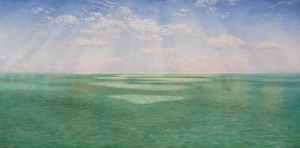
Looking at the View, a sweeping display of 300 years of British landscape painting, opened at London’s Tate Britain on February 12, 2013. The exhibition coincides with the re-opening of the Tate Britain galleries, which were closed for renovations.
The show is part of the museum’s BP British Art Displays, a series that highlights contemporary and historic British art from its collection. Curated by Tate Britain’s director Penelope Curtis, Looking at the View illustrates the different ways British artists have interpreted and portrayed their surroundings over the past three centuries. The exhibition features works from the Romantic and Pre-Raphaelite periods as well as paintings from the Land Art and other contemporary movements. Artists on view include J.M.W. Turner (1775-1851), John Brett (1831-1902), Henry Lamb (1883-1960), Lucian Freud (1922-2011), and Tracey Emin (b. 1963).
Looking at the View, which presents over 70 works by more than 50 artists, is arranged according to motif and draws connections between artists from vastly different time periods and movements. It is on view at Tate Britain through June 2, 2013.
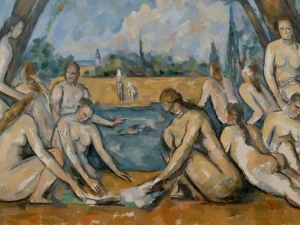
Paul Cézanne’s (1839-1906) The Large Bathers is currently on view at the Museum of Fine Arts, Boston. The work, which is on loan from the Philadelphia Museum of Art, is being exhibited alongside the MFA’s own Where do we come from? What are we? Where are we going? by Paul Gauguin (1848-1903).
The Large Bathers, painted in France between 1900 and 1906, is considered one of the most ambitious of Cézanne’s many works exploring the theme of nudes in a landscape. Serene and idyllic, the painting was left unfinished at the time of Cézanne’s death.
Gauguin’s Where do we come from? What are we? Where are we going?, which was painted between 1897 and 1898, also features nudes in a landscape, but as means to illustrate the inevitable passing of time. Upon its completion, Gauguin said, “I believed that this canvas not only surpasses my preceding ones, but that I shall never do anything better – or even like it.” Gauguin attempted suicide after finishing the painting but was unsuccessful.
Exhibited together for the first time in Boston, Large Bathers and Where do we come from? What are we? Where are we going? bridged the gap between art of the 19th and 20th centuries. In doing so, Cézanne and Gauguin influenced a generation of modern artists including Pablo Picasso (1881-1973) and Henri Matisse (1869-1954).
The two paintings will be on view at the MFA through May 12, 2013.
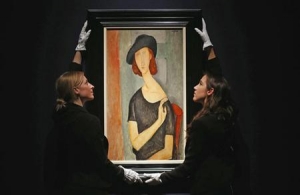
The success of Sotheby’s and Christie’s Impressionist, Surrealist, and Modern sales in London this week is proof that the demand for such works is on the rise. On February 6, 2013 Christie’s brought in $214 million worth of sales, just one day after Sotheby’s evening auction garnered $228 million.
The top lot at Christie’s was Amedeo Modigliani’s (1884-1920) portrait of his common-law wife titled Jeanne Hebuterne (au chapeau) (1919). The work, which was completed just one year before Modigliani’s death, sold for $42.1 million to one of Christie’s Russian-speaking client services representatives, who was bidding on behalf of a client. The work significantly surpassed its high estimate of $34.5 million.
Other major sales from Christie’s auction included Rene Magritte’s (1898-1967) landscape Le plagiat (Plagiary) (1940), which sold for nearly $8.2 million, Pablo Picasso’s (1881-1973) Nu accroupi (1960), which went for $11.4 million, and Pierre-Auguste Renoir’s (1841-1919) L’ombrelle (1878), which garnered $15.2 million.
With 89% of lots sold, the sale was a record in the Impressionist, Surrealist, and Modern category by Christie’s in February in the UK.
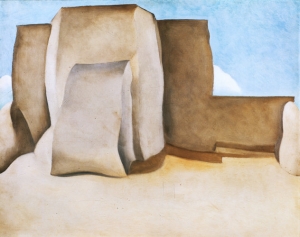
On view at the Montclair Art Museum in New Jersey through January 20, 2013, Georgia O’Keeffe in New Mexico: Architecture, Katsinam, and the Land focuses on Georgia O’Keeffe’s (1887-1986) life from 1929 to 1953. During this time, O’Keeffe lived in New Mexico and found herself enthralled by her surroundings as well as the Native American and Hispano cultures of the region.
While O’Keeffe’s early career as one of the first American abstract painters and her relationship with American photographer and art dealer Alfred Stieglitz (1864-1946) have been examined at length, O’Keeffe’s time in New Mexico has been less studied. The exhibition at the Montclair Art Museum features over 30 paintings and works on paper depicting New Mexico’s local architecture and landscape. From 1931 to 1945, O’Keeffe created numerous drawings, watercolors, and paintings of Kachina dolls (or Katsinam), which are carved representations of Hopi spirit beings. The exhibition includes 15 of these works, which are presented alongside actual Kachina dolls.
The Montclair Museum of Art will compliment Georgia O’Keeffe in New Mexico with a small presentation of three O’Keeffe works from a private collection including two oil paintings, Black Petunia and White Morning Glory 1 and Inside Clam Shell, and one pastel on paper, titled Pink Camellia.
The exhibition at the Montclair Art Museum was organized by the Georgia O’Keeffe Museum in Santa Fe, New Mexico and will travel to the Denver Art Museum (February 10-April 28, 2013), the Georgia O’Keeffe Museum (May 17-September 8, 2013), and the Heard Museum in Phoenix, Arizona (September 27, 2013-January 12, 2014) after its run in New Jersey.
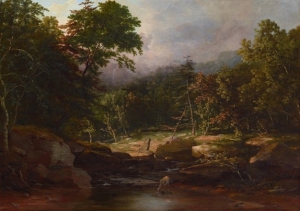
A curator at the Dallas Museum of Art discovered an unsigned painting likely created by the American landscape painter, George Inness. The work has been in the museum’s collection for more than 80 years but had been attributed to Asher B. Durand, one of the leading figures of the Hudson River School painters. The mid-19th century art movement had a profound influence on Inness’ work.
After experts at the museum questioned In the Woods’ attribution, American art curator Sue Canterbury decided to do some research on the oil on canvas. Canterbury explored other artists whose work fit with In the Woods’ aesthetic and stumbled upon Michael Quick’s George Inness: A Catalogue Raisonne. Within the raisonne Canterbury found a pen and ink drawing that bore a striking resemblance to In the Woods. It was then that the museum decided to reattribute the painting to Inness.
The bucolic forest scene has been renamed Stream in the Mountains by curators and will be display at the museum. It is a significant work because it is from Inness’ early years and not many of his works from this era have survived.
|
|
|
|
|